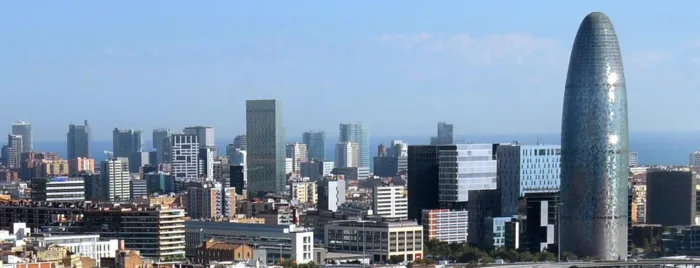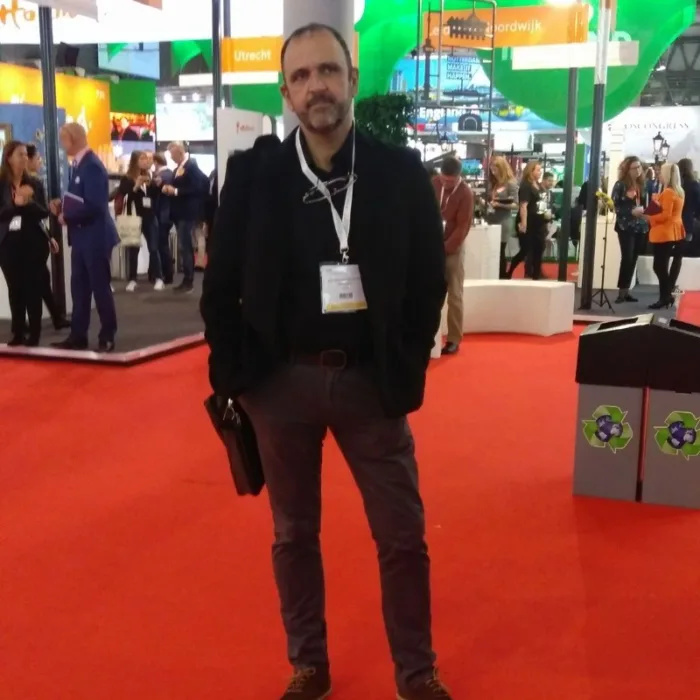Gaborone, the capital of Botswana, is at a crucial juncture in its development. Despite its political stability and an economic management that has avoided the “resource curse,” the city faces challenges in terms of infrastructure, economic diversification, and creating high-value-added employment. Drawing inspiration from the successful model of Barcelona’s 22@ District could provide Gaborone with the necessary impetus to transform into a leading economic and technological hub in Southern Africa.

The Example of Barcelona’s 22@ District
Context and Origin of 22@ Barcelona’s 22@ District, initiated in 2000, is an urban renewal project that transformed a former industrial area into a vibrant innovation and technology hub. This project spans over 200 hectares in the Poblenou neighborhood and has attracted more than 4,500 companies, generating over 56,000 jobs. The goals of 22@ include fostering innovation, creating high-quality jobs, and improving quality of life through advanced and sustainable urban planning.
Results and Successes The success of 22@ is reflected in its ability to attract tech companies, universities, and research institutions, creating a collaborative ecosystem that drives Barcelona’s economy. Additionally, the area’s regeneration has significantly improved urban infrastructure and public spaces, making it an attractive place to live and work.
Potential for a Similar Project in Gaborone
Context of Gaborone As the capital of Botswana, Gaborone is the country’s economic and administrative center. Despite its stability and educational advancements, the city faces critical challenges: insufficient infrastructure, an economy heavily reliant on diamonds, and the need to generate high-value-added employment.
Reasons to Adopt the 22@ Model in Gaborone
- Economic Diversification: Botswana needs to diversify its economy. An innovation district in Gaborone could attract investments in technology, education, and financial services, reducing dependence on diamonds.
- Urban Development: Regenerating urban areas would improve the city’s quality of life and sustainability, making it more attractive to investors and residents.
- Job Creation: Promoting innovation and technology could generate high-quality jobs, retaining local talent and attracting qualified professionals from other regions.
Key Factors for Success in Gaborone
Urban Planning and Development The project’s first phase should focus on identifying suitable areas for transformation, such as industrial zones or underutilized areas in Gaborone. Investing in basic infrastructure, including transport, energy, and telecommunications, is essential to support the development of an innovation district. Additionally, creating green spaces and recreational areas would significantly enhance residents’ quality of life.
Policies and Incentives To attract investments, Gaborone should offer tax incentives to tech companies and startups that establish themselves in the district. Implementing favorable regulations and establishing government agencies dedicated to facilitating the district’s development and attracting foreign investments are also crucial steps.
Innovation Ecosystem Developing an innovation ecosystem requires fostering collaboration between universities, research centers, and companies. This can include creating science and technology parks, incubators, and accelerators to support startups and SMEs in their early stages. Facilitating access to venture capital and funding for innovative ventures is another vital aspect.
Training and Education Investing in technical and vocational training programs in technology and science fields is essential to create a skilled workforce. Collaborations with educational institutions and companies can ensure that training programs align with labor market needs.
Sustainability and Social Responsibility To ensure sustainable development, promoting the use of clean technologies and energy efficiency in the district is important. Implementing social responsibility programs to ensure that development benefits the local community and minimizes displacement is also essential.
Gaborone as the Future Economic and Technological Hub of Southern Africa
Adopting the 22@ model in Gaborone has the potential to transform the city into a leading economic and technological hub in Southern Africa. Botswana’s political stability and commitment to good governance provide a solid foundation for a project of this magnitude.
Economic Impact The economic diversification resulting from the creation of an innovation district could strengthen Botswana’s economy, reducing its reliance on diamonds and creating new opportunities in high-value-added sectors. This would benefit not only Gaborone but also have a positive impact on the entire region.
Attracting Talent and Investments An innovation district would make Gaborone an attractive destination for local and international talent, as well as foreign direct investments. This would foster a growth and development environment, elevating Gaborone’s profile as a dynamic and modern city.
Improving Quality of Life Urban regeneration and infrastructure improvements would contribute to a better quality of life for Gaborone residents. Creating green spaces, recreational areas, and better urban planning would make the city a more pleasant place to live and work.
Gaborone has the potential to become a leading economic and technological hub in Southern Africa, inspired by the successful model of Barcelona’s 22@ District. By focusing on urban planning, favorable policies, developing an innovation ecosystem, technical training, and sustainability, Gaborone can transform into an axis of innovation and growth. This transformation would not only benefit the city and the country but could also serve as a model for other cities in Africa, demonstrating that with vision and strategic planning, sustainable and inclusive economic development is possible.
#Gaborone #Botswana #EconomicGrowth #InnovationDistrict #UrbanDevelopment #TechHub #SustainableDevelopment #EconomicDiversification #22Barcelona #FutureOfAfrica
Sources:
- Distrito 22@: Barcelona’s Urban Innovation Model
- 22@ Transformation
- Economic Impact of 22@
- Economic Diversification in Botswana

Juan Esteban Reina (Barcelona). Degree in Human Geography. CEO and Owner of ProdAfrica Consulting & Business Directory. Heads the ProdAfrica team. .
Spcialist in urbanism, geomarketing and tourism. He is currently developing projects oriented to consultancy especially in fields such as tourism, business and commercial development, as well as promoting business between Africa and Europe.
His passion is Africa. He firmly believes in the future of the continent and the ability of its people to achieve a better future for future generations.